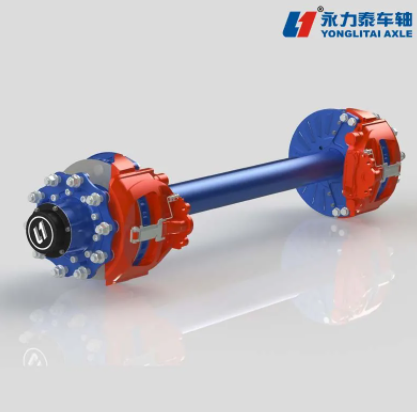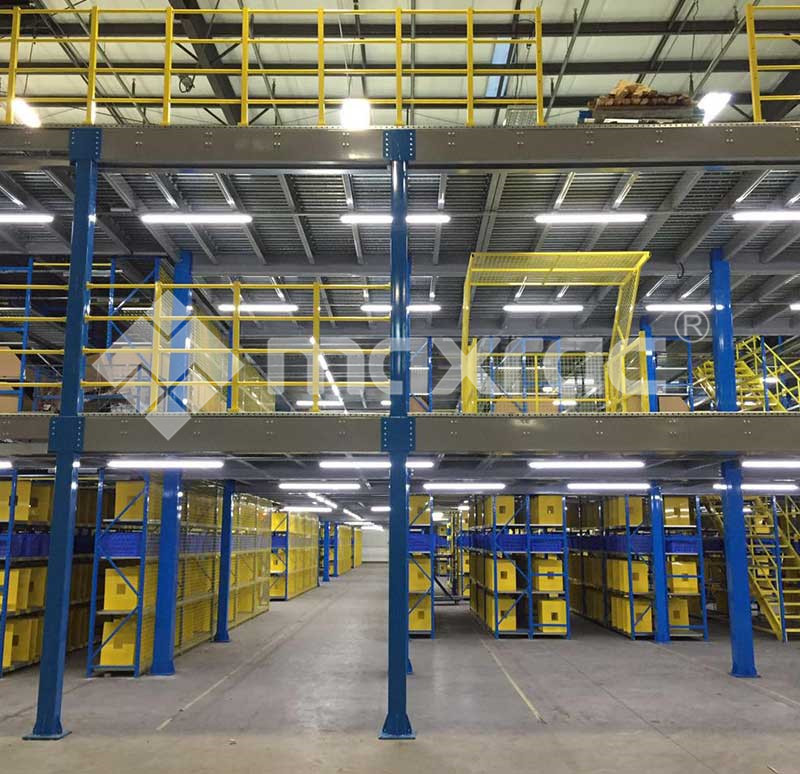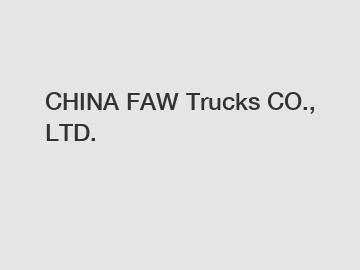How Can I Tell if My Axle Is Broken?
Your vehicle's axle is a critical component that plays a pivotal role in connecting your wheels and ensuring that they rotate smoothly. A broken axle can be a dangerous and costly problem, so it's essential to identify the signs of axle damage early to prevent further damage and ensure your safety. In this article, we will explore how to tell if your axle is broken, the potential causes of axle damage, and what to do if you suspect an issue.
Signs of a Broken Axle:
Unusual Sounds: One of the most common signs of a broken axle is unusual sounds coming from your vehicle. You may hear a loud clicking or clunking noise when you accelerate, decelerate, or make sharp turns. These sounds often indicate that something is amiss with your axle, and you should investigate further.
Vibrations: A broken axle can lead to vibrations that you can feel through the steering wheel or the floor of your vehicle. These vibrations are typically more pronounced when you're accelerating or driving at certain speeds. The intensity of the vibrations may increase as the damage to the axle worsens.
Uneven Tire Wear: A damaged axle can cause your tires to wear unevenly. Check your tires for signs of excessive wear on one side or irregular patterns. Uneven tire wear can be an indication that the axle is not distributing the weight and forces evenly across the wheels.
Drifting or Pulling: If you notice that your vehicle tends to drift or pull to one side while driving, it could be a sign of axle damage. This issue can also affect your ability to maintain control of the vehicle, especially when turning or navigating curves.
Difficulty Steering: A broken axle can make it challenging to steer your vehicle. You may experience stiffness in the steering wheel, making it harder to turn. This can affect your ability to maneuver and can be particularly dangerous in emergency situations.
Visible Damage: Inspect your axle visually if you suspect damage. Look for any visible cracks, bends, or signs of physical damage to the axle itself or the boots that cover the CV (constant velocity) joints. Damage to the protective boots can expose the joints to contaminants and lead to axle failure.
Fluid Leaks: In the case of a front-wheel-drive vehicle, a broken axle can cause transmission fluid to leak from the transmission or differential. This leakage is often due to damage to the axle seals, which protect the lubricating fluid in these components.
Causes of Axle Damage:
Understanding the potential causes of axle damage can help you prevent future issues and take necessary precautions:
Overloading: Exceeding your vehicle's weight capacity can strain the axles and lead to damage. Always follow the manufacturer's recommended weight limits and avoid overloading your vehicle, especially if you frequently carry heavy loads.
Accidents or Collisions: A severe impact, such as a collision or hitting a large pothole, can lead to axle damage. Even if the external damage isn't readily visible, the internal structure of the axle may be compromised.
Additional resources:What are benefits of air suspension?
What are the different types of pallet racking systems?
The Power of LNG Semi-Trailers: Unlocking a Cleaner Future for Transportation
Side Wall Trailer: A Comprehensive Guide to its Features and Benefits
Why do people like campers?
Why do people like Travel campers?
Safety Procedures for LPG Forklifts
Neglected Maintenance: Failure to perform regular maintenance, such as lubricating the CV joints, can accelerate wear and tear on your axles. The absence of proper maintenance can lead to damage over time.
Age and Wear: Axles, like other mechanical components, have a limited lifespan. The older your vehicle, the more susceptible your axles are to wear and potential failure.
Excessive Off-Roading: Off-road driving, especially on rugged terrain, can put a significant strain on your axles. The constant jolts, impacts, and extreme angles can lead to axle damage over time.
What to Do if You Suspect a Broken Axle:
If you suspect that your axle is broken or damaged, it's essential to take immediate action to prevent further issues and ensure your safety:
Stop Driving: If you experience any of the signs mentioned earlier, stop driving your vehicle immediately. Continuing to drive with a damaged axle can lead to more severe damage and potential accidents.
Have Your Vehicle Inspected: Contact a qualified mechanic or automotive technician to inspect your vehicle. They will be able to diagnose the issue, determine whether the axle is indeed damaged, and assess the extent of the damage.
Repair or Replace the Axle: Depending on the severity of the damage, you may need to repair or replace the axle. In some cases, repairing a damaged axle may be possible, but it's crucial to follow the recommendations of the mechanic to ensure safety and reliability.
Maintain Preventative Care: Regular vehicle maintenance can help prevent axle damage. Ensure that you follow your manufacturer's recommended maintenance schedule, including checking and lubricating CV joints as needed.
Practice Safe Driving: Avoid overloading your vehicle and drive cautiously, especially on rough or uneven roads. Being a conscientious driver can help protect your axles and extend their lifespan.
Consider Upgrading: In some cases, if you find yourself frequently dealing with axle problems due to challenging driving conditions, it might be worth considering upgrading to reinforced or heavy-duty axles that are better suited to your needs.
In Conclusion:
A broken axle is a serious issue that can jeopardize your safety and the functionality of your vehicle. Recognizing the signs of axle damage early and taking prompt action is essential to avoid further complications and costly repairs. Regular maintenance and safe driving practices can also help prevent axle damage and ensure the longevity of this critical vehicle component. If you suspect any issues with your axles, don't delay; consult a professional mechanic to diagnose and address the problem promptly.
What are the different types of tanks in LNG ship?
The Future of Shipping: Maximizing Efficiency with Marine LNG Tanks
What is a car transport semi trailer
What are curtain side trailers used for?
What are the top advantages of using LNG transportation equipment?
How should LPG be stored?
What are the layers of the LNG tank?
Related Articles










Comments